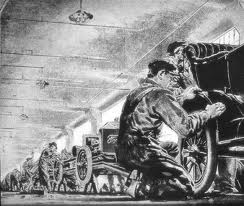
The Third World
To get the full picture and be able to make further considerations on industrial society, it is impossible not to pay attention to the "Third World."
This expression was originally intended to designate an opposition between three main types of societies founded in the twentieth century.
The countries of the "First World", i.e. industrialized countries (Europe, the USA, Australia, Asia and Japan) almost all of which had multiparty and parliamentary systems of government. The countries of the "Second World", made reference to the communist societies of the Soviet Union and Eastern Europe (Czechoslovakia, Poland, Hungary), in which the economy was centrally planned: it was given a small role to private property and competitive economic enterprise. They were also one-party states: the Communist Party dominated both the political and the economic system. Today, the "second world", with the collapse of communism in the USSR and Eastern Europe, has disappeared.
The "Third World" remains, i.e. that part of the world (Asia-Africa-South America) which has a much lower level of industrial development, poor and most of the population is dedicated to agriculture. They are very poor societies, where the majority of the population still lives in rural areas and although agriculture remains the dominant form of economic activity, its products are often intended for sale on the world market, rather than for local consumption.
Those who live in industrialized societies depend on many raw materials and manufactured goods from Third World countries. Conversely the economy of the Third World largely depends on the commercial networks that connect them to the industrialized countries. The current system in the latter is fully understood only against the background of what is happening in the societies of the Third World, where the vast majority of the world population not for nothing lives.
- Dr. Antonio Gelsomino
READ ALSO:
The first industrial revolution
The second industrial revolution
The changes made by the industrial society
The industrial societies and transformations
The family and the influence of the industrial society








